Netgear Router Setup
In the world of internet connectivity, it’s crucial to have a reliable and efficient router at the heart of your home network. This is where the Netgear router setup process plays a vital role. Ensuring that your Netgear router is correctly installed is the first step towards seamless, high-speed internet access.
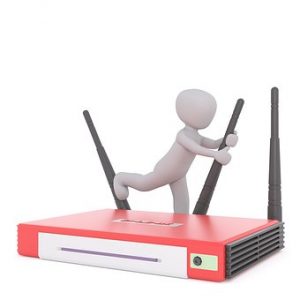 Netgear is a renowned brand that offers an extensive range of routers to suit various needs. But no matter the model, every Netgear router comes with a distinct setup process. While the process may seem daunting at first, it’s an essential step toward maximizing your router’s performance. This setup procedure provides you with control over your internet’s speed, security, and overall functionality.
Netgear is a renowned brand that offers an extensive range of routers to suit various needs. But no matter the model, every Netgear router comes with a distinct setup process. While the process may seem daunting at first, it’s an essential step toward maximizing your router’s performance. This setup procedure provides you with control over your internet’s speed, security, and overall functionality.
Often, users find it challenging to set up Netgear routers, especially when doing it for the first time. However, a correct and comprehensive Netgear setup ensures that your internet connection is stable, secure, and efficient, paving the way for an improved online experience. Whether you’re streaming, gaming, or just browsing, a properly set up Netgear router will provide you with the optimum performance you need.
In the following sections, we will guide you through a simple yet detailed approach to the Netgear router setup, enabling you to unleash the full potential of your router and enhance your internet connectivity.
How to Setup Netgear Router:
Netgear router setup process happens in multiple ways, here we are giving the information on How to setup Netgear router without CD
- Unpack your Netgear router: Begin the Netgear router setup by unpacking your router and ensuring that all the necessary components, such as the power adapter and Ethernet cables, are available.
- Connect your router to the modem: Using an Ethernet cable, connect the Internet port on your Netgear router to the modem. Ensure that your modem is turned off during this step of the Netgear setup.
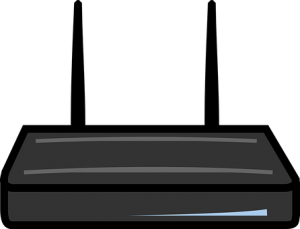
- Power up your devices: Turn on your modem first and wait for it to come fully online. Next, connect your router to the power source and turn it on. The power light on your router should turn green, indicating a successful initial Netgear router setup.
- Connect your computer to the router: You can connect your computer to the router using either a wired or wireless connection. For a wired connection, use another Ethernet cable to connect your computer to one of the LAN ports on the router.
- Access the Router’s Web Interface: Open a web browser and enter http://www.routerlogin.net in the address bar. This step initiates the Netgear setup process by allowing you to access the router’s settings.
- Log in to your router: Enter the default username and password. Typically, the username is ‘admin’, and the password is ‘password’. However, refer to your router’s user manual to confirm these details for your specific Netgear router setup.
- Run the Setup Wizard: After logging in, the Netgear Setup Wizard will appear. Click ‘Yes’ to let the wizard detect your internet connection and automatically configure your router for you.
- Confirm the Netgear setup: The final step in the Netgear setup is to confirm that your router is connected to the internet. To do this, you can try to visit a website from a device connected to the router. If the website loads correctly, your Netgear router setup is complete.
Remember, setting up Netgear router properly is the first step toward a stable and secure internet connection. That was all about how to setup Netgear router without CD. Take your time during the setup process to ensure that everything is done correctly.
Configure Netgear Router Settings:
Netgear routers are popular for their performance and durability. Understanding your Netgear router settings is essential as they form the backbone of your home network, managing the data traffic between your devices and the internet.
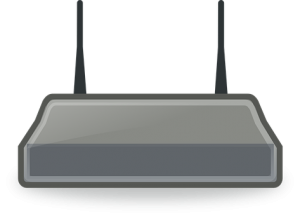 Your Netgear router settings include a host of options such as setting your network name (SSID), and password and managing your router’s security features. Understanding these settings helps you customize your router’s performance to suit your specific needs.
Your Netgear router settings include a host of options such as setting your network name (SSID), and password and managing your router’s security features. Understanding these settings helps you customize your router’s performance to suit your specific needs.
The Netgear router settings also allow you to control and monitor the devices connected to your network, enabling you to ensure the security and efficiency of your internet connection. Netgear router setting includes several features, like enabling or disabling wireless signal, controlling guest access, setting up parental controls, and managing QoS (Quality of Service) settings for prioritizing network traffic.
Understanding the Netgear router setting for Wi-Fi frequency bands (2.4GHz and 5GHz) is crucial as it helps you to balance the speed and range of your wireless connection.
Lastly, the Netgear router setting for updating firmware keeps your router running smoothly with the latest features and security updates. It’s essential to be familiar with this setting to keep your router’s performance optimal.
Common Netgear Router Setup Issues:
Even though the Netgear router setup is usually straightforward, users may occasionally encounter some challenges. Here are some common issues and solutions.
- Router Not Connecting to the Internet: This could be due to outdated router firmware. Regular Netgear firmware updates can help to resolve this issue. Always ensure that your router has the latest firmware to maintain optimal performance.
- The Router is Frequently Disconnecting: This problem could be a signal that your router’s firmware is outdated. Carry out a Netgear router firmware update by navigating to the router’s admin panel and checking for available updates.
- Slow Internet Speed: Sometimes, you may experience slow Internet speed due to outdated router firmware. Performing a Netgear router update can significantly improve your Internet speed by optimizing the router’s performance.
- Issues with Router Login: If you’re having trouble logging into your router, this could be a sign that a Netgear firmware update is required. Firmware updates often come with fixes for various bugs and issues, including login problems.
- Unable to set up Parental Controls: If you’re facing issues setting up Parental Controls, a Netgear router firmware update might be needed. This update can resolve compatibility issues and ensure smoother performance.
- Problems with Guest Network: If you’re unable to set up or manage your router’s Guest Network, consider doing a Netgear router update. This will ensure that you’re using the latest version of the firmware, which might resolve any existing issues.
Remember, if you face any issues with your router, the first thing to check is whether there’s a Netgear router firmware update available. Regular updates will keep your router running efficiently and securely.
How to Fix Common Netgear Router Setup Issues:
Apart from Netgear router firmware update there are many other best practices to fix the common Netgear router setup problems, have a look: –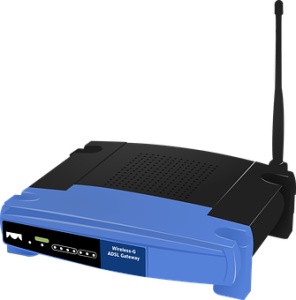
Trouble Connecting to the Internet:
- Check Physical Connections: Ensure that all cables connecting your modem, router, and other devices are properly plugged in. Loose or damaged connections can often cause internet connectivity issues.
- Reset Your Router: Sometimes, simply resetting your router can resolve internet connection problems. Unplug the router from the power source, wait for about a minute, then plug it back in. Allow it to reboot and try connecting to the internet again.
Frequent Disconnections:
- Check Wi-Fi Interference: Many devices in your home, like cordless phones or microwaves, can interfere with your router’s signal. Try moving your router to a central location, away from these devices.
- Change the Channel: Your router uses specific channels to transmit Wi-Fi signals. If multiple routers in your vicinity are using the same channel, it could cause disconnections. Try changing your router’s channel through the settings to avoid this.
Slow Internet Speed:
- Position Your Router Correctly: If your router is placed in a corner or behind obstacles, it can limit the Wi-Fi signal. Place your router in an open, central location for the best signal distribution.
- Limit Bandwidth-Hogging Applications: If certain applications are using too much bandwidth, it can slow down your internet speed. Consider limiting the bandwidth usage of these applications through your router’s QoS settings.
Issues with Router Login:
- Check Your Login Details: If you’re unable to log in, make sure you’re entering the correct username and password. The default username is usually ‘admin’ and the password is ‘password’, unless you have changed them.
- Reset Router Password: If you’ve forgotten your login credentials, you may need to reset your router to its factory settings. This will restore the default login credentials, but also erase any custom settings you’ve made.
Unable to Setup Parental Controls:
- Verify Your Account: Make sure that you’re logged into the correct Netgear account. Parental control settings are linked to your account, and logging into the wrong one could cause issues.
- Reconfigure Parental Controls: If you’re still having trouble, try disabling and then re-enabling Parental Controls. Sometimes, reconfiguring these settings can resolve any issues.
Problems with Guest Network:
- Check Guest Network Settings: Make sure that you’ve correctly configured your guest network settings. Incorrect settings could prevent the guest network from functioning correctly.
- Reboot Your Router: As with many technical issues, a simple reboot can often resolve problems with the guest network. If the issue persists after rebooting, you may need to reset your router to its factory settings and reconfigure the guest network.
Remember, not every issue requires a firmware update. Sometimes, simple troubleshooting steps can resolve most common router setup problems.
Conclusion:
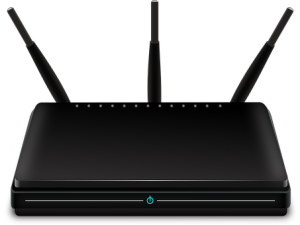 Navigating the world of routers and home networks might seem complex, but with the right guidance, the task becomes far more manageable. This guide has walked you through the process of setting up your Netgear router, understanding its settings, and troubleshooting common issues that might arise.
Navigating the world of routers and home networks might seem complex, but with the right guidance, the task becomes far more manageable. This guide has walked you through the process of setting up your Netgear router, understanding its settings, and troubleshooting common issues that might arise.
Regularly updating and checking your Netgear router settings can significantly enhance your internet experience by ensuring a secure and efficient network. In case of persistent issues, remember to consult with Netgear’s extensive online resources or their customer support.
The goal of a smooth, reliable internet connection is achievable with a little patience and the willingness to understand and interact with your Netgear router settings. So don’t hesitate to dive in and get the most out of your home network.
Uses can also navigate to the Netgear Router Support Article to know more about Netgera Router setup & troubelsooting Netgear Router problems.

